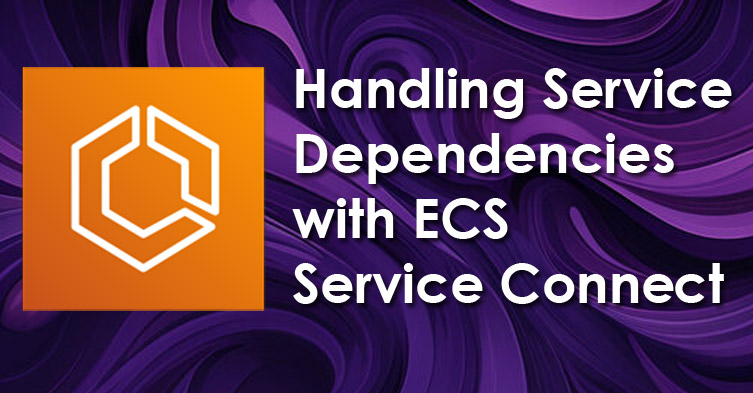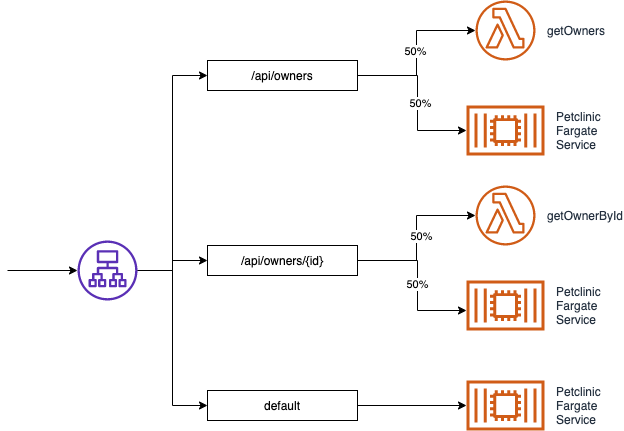Reproduce the scenario with my CDK example: https://github.com/foyst/ecs-service-connect-dependencies I’ve been working on a project recently that made use of AWS Elastic Container Service (ECS) Service Connect. Since I last used ECS they’ve introduced capabilities around service discovery which aim to solve challenges orchestrating services in distributed and fluid environments. ECS Service Connect is different to Service Discovery, in that it still uses AWS Cloud Map under the hood as a service catalogue, but uses API based discovery rather than DNS. This means it’s quicker for it to detect outages to applications and update service entries as necessary. It’s kinda like...
Continue reading...AWS
Challenges working with and tuning AWS Amplify and AppSync with Flutter
Whilst building my tutorial in Cross-platform mobile app prototyping with Flutter and AWS Amplify, I encountered a few issues whilst deploying an API capable of storing user details. My requirements were fairly basic – store a few simple details about a user (name, location and favourite programming language), and query this information based on the logged in user of my app. In Amplify, you can very quickly build and deploy and API with a single command: The following may feel like I’m taking you on a wild goose chase, but I figure if I shared the journey and pain encountered along...
Continue reading...Cross-platform mobile app prototyping with Flutter and AWS Amplify
I’m going to show you how you can use Flutter and AWS Amplify to quickly go from nothing to a working cross-platform mobile application with authentication and backend infrastructure. What would usually take a small dev team a week or so to setup can be achieved in a fraction of the time using this toolkit. If you follow along with this tutorial, it should take you no more than an hour… well… it took me several hours fighting with various issues, but hopefully I’ve documented them well enough so you shouldn’t hit them! Here’s the finished product. If you want...
Continue reading...From Spring Boot Microservices to Lambda functions – a journey
You may be one of many organisations (or an engineer in one) that operates Java microservices in the cloud with a desire to move towards a serverless architecture, but are unable to justify the steep migration path (e.g. decomposing your services into functions, rewriting in a more suitable language etc.) from those microservices to the likes of AWS Lambda. But fear not! Because with the help of spring-cloud-function you can repurpose your existing microservices into serverless functions in a gradual and controlled manner, with minimal effort or interruption of service. In this article I’ll explain how you can achieve this...
Continue reading...My expedition from AWS to GCP (with Terraform)
Follow along with my GitHub repo for this blog: https://github.com/foyst/gcp-terraform-quickstart/ TL;DR – Here’s the headline differences that might be useful for those adopting GCP from an AWS background: Difference #1 In AWS, projects or systems are separated using AWS Accounts, where as GCP has the built-in concept of “Projects”. Difference #2 – The GCP Console is always at global level – no need to switch between regions. Difference #3 – auto_create_subnetworks = false, otherwise you have a subnet created for every availability zone by default. Difference #4 – You have to enable services before you can use them. Difference #5...
Continue reading...Performance Tuning Next.js
TL;DR: Next.js 9.3 introduces getStaticPaths, which allows you to generate a data-driven list of pages to render at build time, potentially allowing you to bypass server-side rendering for some use cases. You can now also use the fallback property to dynamically build pages on request, and serve the generated html instead. On a recent project we built a website for a client using a combination of Next.js and Contentful headless CMS. The goal of the website was to offer a responsive experience across all devices whilst keeping load times to a minimum and supporting SEO. I rather like Next.js –...
Continue reading...Booking a Meeting Room with Alexa – Part Two – Coding the Skill
Hey there! In my previous post Booking a Meeting Room with Alexa – Part One, I talk about how to build up the Interaction Model for your Skill using the Alexa Developer Console. Now, I’ll talk about how to write code that can handle the requests. Setting Up I chose to use JavaScript to write the skill, as I wanted to try something a little different to Java which is what I normally use. Alexa has an SDK that allows you to develop Skills in a number of languages including Java and Javascript, but also C#, Python, Go and probably...
Continue reading...Booking a Meeting Room with Alexa – Part One
Hey there! This is part one into my adventures of developing an Alexa skill. I was inspired recently on client site, where I saw they’d installed a shiny new room booking system. Each meeting room had a touch screen setup outside of it, and from it you could see who’d booked the room, and also use it to book the room out if it was available. It had the right idea, but from talking to people I learnt that it wasn’t the most user-friendly, and that it had cost a pretty penny too! I’d been looking for an excuse to...
Continue reading...

